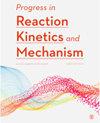极性质子溶剂催化苯并咪唑酮和苯并咪唑硫酮互变异构过程中的质子转移
IF 2.1
4区 化学
Q3 CHEMISTRY, PHYSICAL
引用次数: 4
摘要
采用CAM-B3LYP泛函和6-311G(d,p)基集,采用密度泛函理论研究了苯并咪唑酮和苯并咪唑硫酮的互变异构平衡。研究了两种不同的机制:使用极化连续体模型的直接分子内转移和由溶剂分子(C6H12, H2O, CH3OH和H2O2)辅助的间接质子转移。在这两种情况下,得到的结果表明酮和硫酮是最稳定的形式。然而,将互变异构反应描述为直接分子内转移的四中心机制的激活屏障高度的提高意味着一个相对不利的过程。极性质子溶剂分子的参与使得活化能垒降低。在甲醇和水的作用下,酮烯醇和硫烯醇互变异构的势能分布有很大的不同。前者描述了一种协同机制,但后者没有,因为它与发生在硫烯醇互变异构过程中的异步过程有关。本文章由计算机程序翻译,如有差异,请以英文原文为准。
Proton transfer in the benzimidazolone and benzimidazolthione tautomerism process catalyzed by polar protic solvents
The tautomeric equilibrium of benzimidazolone and benzimidazolthione have been studied by the density functional theory method using the CAM-B3LYP functional together with the 6-311G(d,p) basis set. Two separate mechanisms have been investigated: a direct intramolecular transfer using the polarizable continuum model and an indirect proton transfer assisted by a molecule of solvent (C6H12, H2O, CH3OH, and H2O2). In both cases, the results obtained indicate that ketone and thione are the most stable forms. However, the enhanced height of the activation barrier for the four-center mechanisms describing the tautomerism reaction as a direct intramolecular transfer implicates a relatively disadvantaged process. The participation of a polar protic solvent molecule allows the lowering of the activation energy barrier. Potential energy profiles of keto-enol and thio-enol tautomerism assisted by methanol and water are very different. The former one describes a concerted mechanism but the latter does not because it is associated with asynchronous processes that take place during the thio-enol tautomerism.
求助全文
通过发布文献求助,成功后即可免费获取论文全文。
去求助
来源期刊
CiteScore
2.10
自引率
0.00%
发文量
5
审稿时长
2.3 months
期刊介绍:
The journal covers the fields of kinetics and mechanisms of chemical processes in the gas phase and solution of both simple and complex systems.

 求助内容:
求助内容: 应助结果提醒方式:
应助结果提醒方式:


